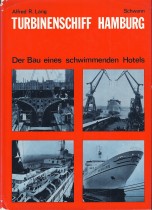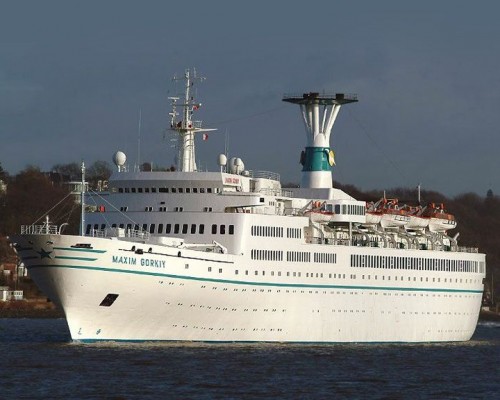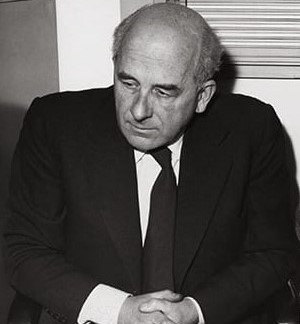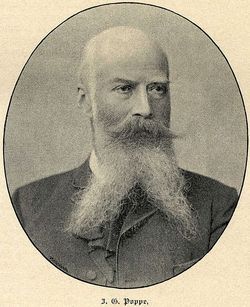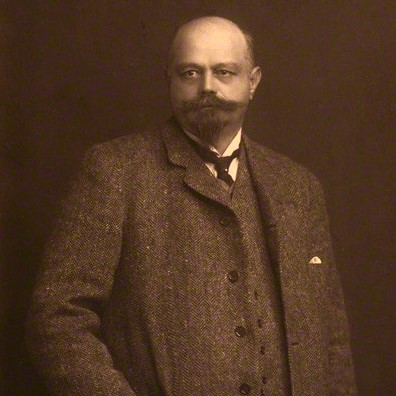Originally built as a dual purpose ocean liner/ cruise ship for transatlantic service between Hamburg and New York and the remainder of the year as a cruise ship, the Hamburg only sailed in cruise service. Hamburg Atlantic Line had ordered her in November 1966 from the Deutsche Werft in Hamburg. During construction of the Hamburg the yard merged with Howaldtswerke. The newly formed Howaldstwerke Dutsche Werft delivered her in early 1969.

Hamburg’s interiors followed an axial design featuring a central passageway running the entire length of each deck. Interior design had been handled by Georg Manner, a German interior designer with experience in this field, having worked on North German Lloyd’s Bremen. His influence on board the Hamburg was considerable and went as far as the general lay-out and the choice of fabrics, furniture and artwork. Hamburg was given the nickname “The Space Ship” because of her spectacular funnel, being a tall funnel with a disc on top of it resembling a flying saucer which made her instantly recognizable from afar. Other funnel designs had been considered, even twin uptakes like those on the ss Rotterdam of 1959 because the exhaust ducts needed to be split and guided along her sides because of her axial interior lay-out anyway, but they were all discarded.

A second reason for this nickname were her spacious interiors. Her main public spaces apart from the theatre were located forward, her cabins aft. 95% of her cabins had a bathtub, which was never seen before onboard a cruise ship of her size.
Hamburg Atlantic Line had started in 1958 with their first Hanseatic (the former Empress of Scotland of Canadian Pacific). She sailed from the famous Steubenhoft terminal in Cuxhaven to New York ferrying emigrants across. Already an older vessel (built in 1930), Hanseatic (I) needed to be replaced by modern tonnage so Hamburg Atlantic ordered a new ship, to be named Hamburg in 1966. However, Hanseatic (I) burnt out in 1966 whilst being in the port of New York because of an engine room fire that quickly spread and being beyond repair, she was replaced by Hanseatic (II), which had been acquired from Zim Lines ((Israel) which had operated her as Shalom.

After having been delivered in 1969, Hamburg‘s first four years were spent cruising in Europen waters and to North & South Africa (Hamburg Atlantic had abandoned liner service altogether just before the new Hamburg was taken into service). She never made any money for her owners, even though in her first year, she sailed on the highest number of cruises, 38 to be exact, of any operator after World War II. Alas, in 1973 Hamburg Atlantic Line ran into financial problems because of the oil crisis which made fuel prices explode. They were forced to sell the Hanseatic (II) to Home Lines, becoming their Doric as a replacement for their former Homeric which had burnt a couple of months earlier. Hamburg was immediately renamed Hanseatic (III) but this lasted for just two moths as Hamburg Atlantic Line went bankrupt and stopped trading on December 1 1973. She was laid up and put on the sales list. She was sold to an American firm Robin International (some sources say by Japanese interests) and it turned out that they had bought her on behalf of the Soviet shipping line Baltic Shipping Company. Baltic Shipping renamed her Maxim Gorkiy.
Maxim Gorkiy interiors
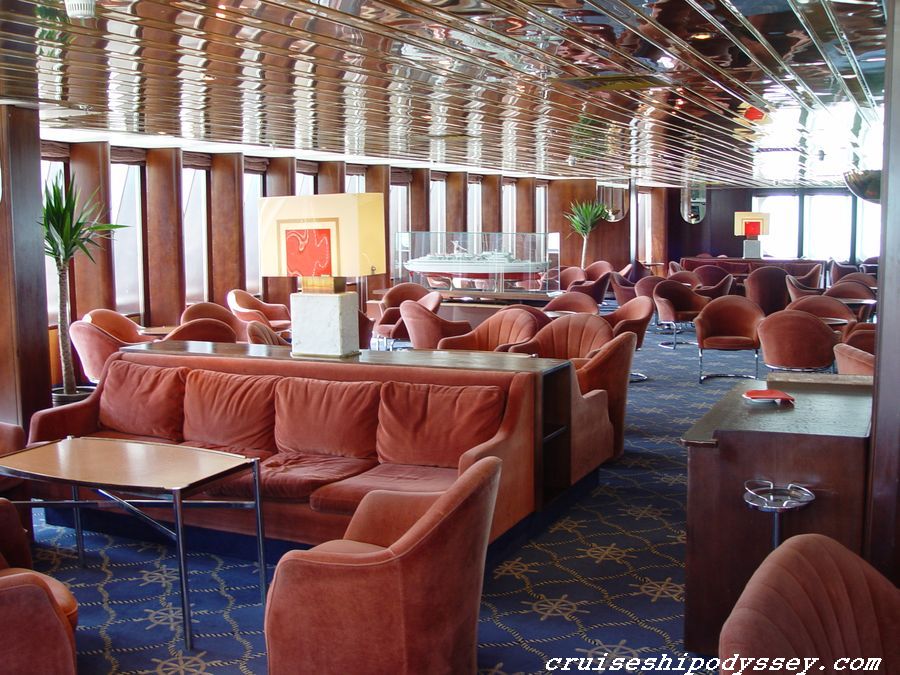
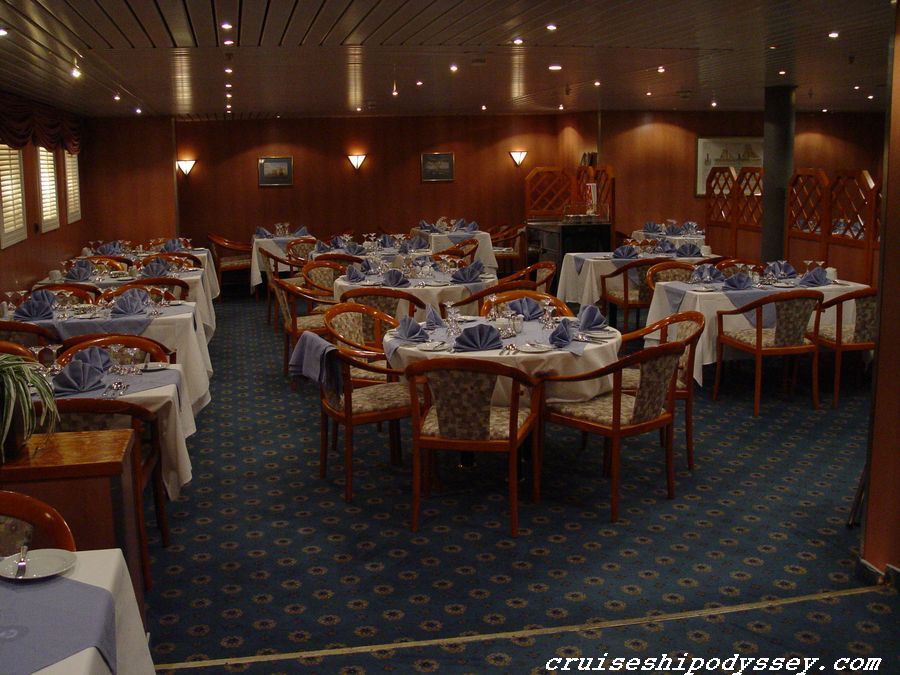
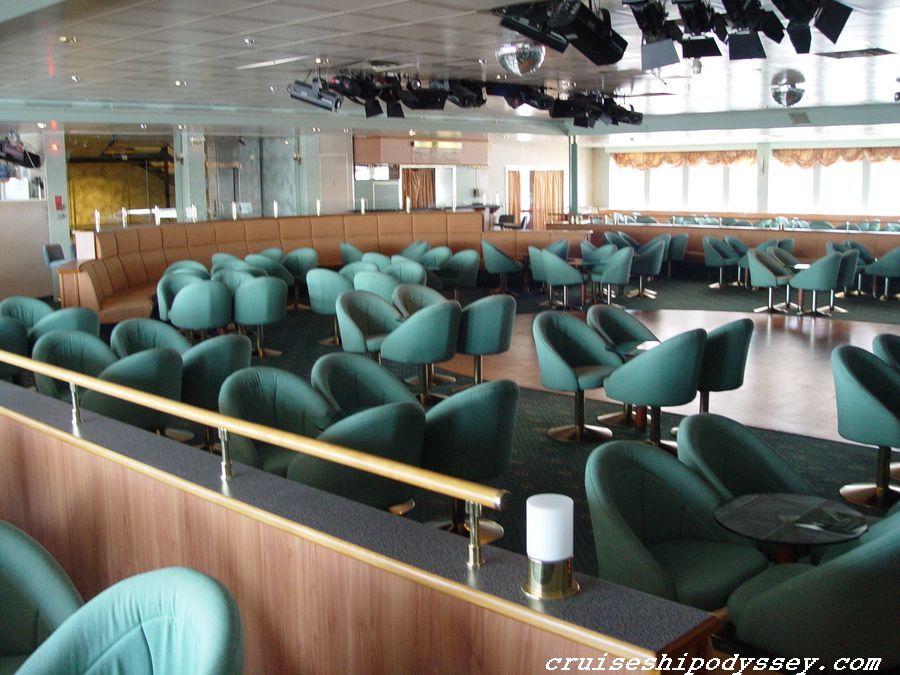
She was now the most luxorious cruise liner of the Soviets, being the only 4-star vessel of their fleet. She was named after the writer Maxim Gorkiy, but she was not one of the well-known poet/ writer class ships built in Eastern Germany (five ships namely Ivan Franko, Mikhail Lermontov, Alexandr Pushkin, Shota Rustaveli and Taras Shevchenko). Baltic Shipping has chartered her out to West German operators for almost her entire remaining career. In 1988 she was chartered to West German Phoenix for a period of 20 (!) years.
Some examples of her gorgeous classic cabins
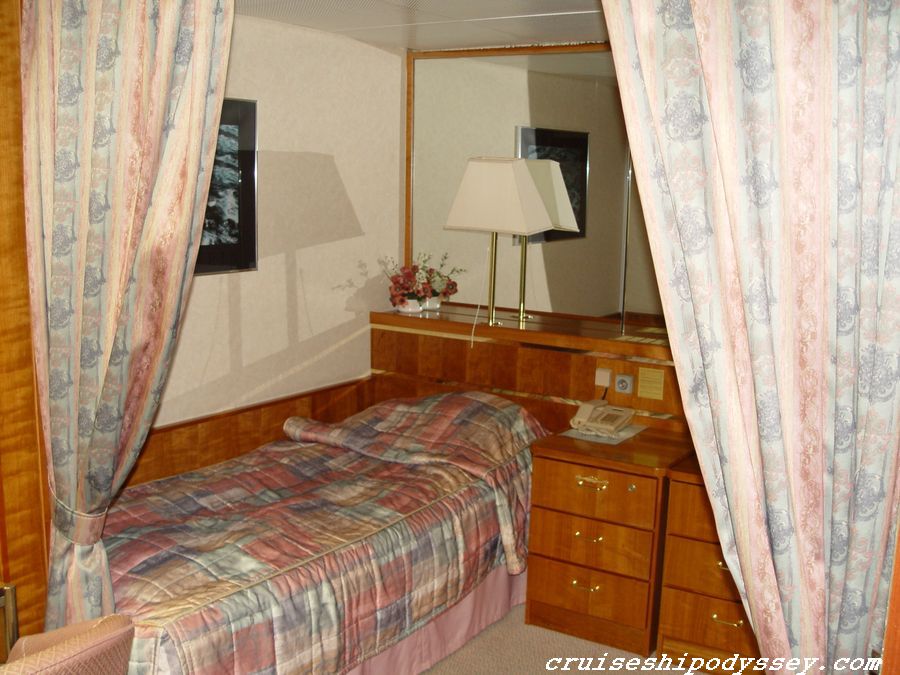
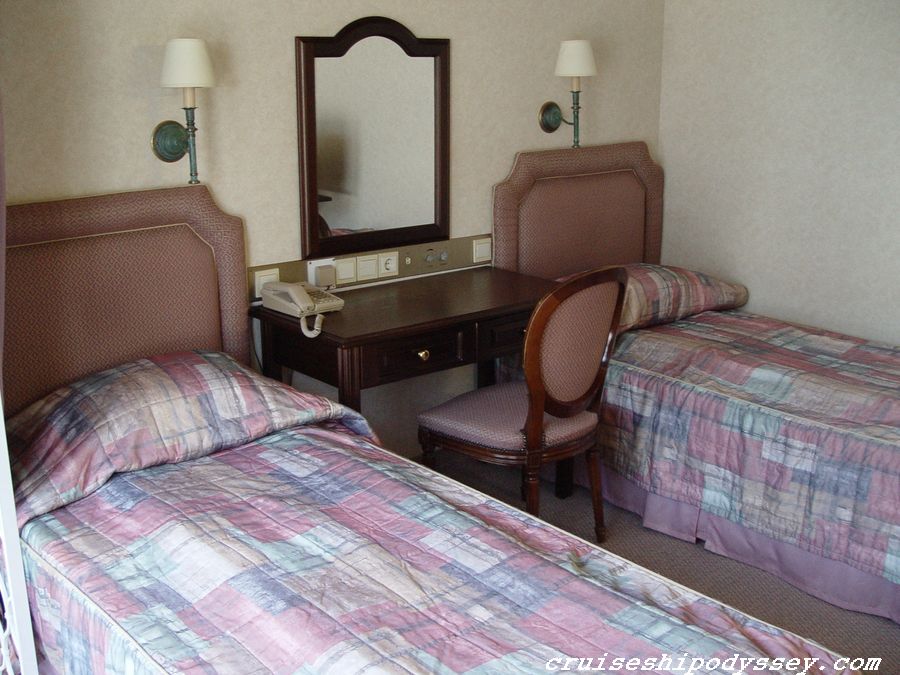
It took until 2005 before she was repainted in the green/ white Phoenix livery. Before that her funnel had retained its Soviet colours, and even after the collapse of the Soviet Union, when she was shifted to new owner Sovcomflot, she sailed with the colours of new independent Russia. In 1988 Maxim Gorkiy was refitted, but her interior lay-out remained unaltered, which it stayed for the remainder of her career. When her long-term charter to Phoenix Reisen ended in 2008, the Germans decided not to renew it, because now Maxim Gorkiy had become an old vessel with a high fuel consumption with her fuel hungry steam turbines. There was another problem as a new SOLAS (safety of Life at Sea) rules to be introduced in 2010 would make substantial alterations and upgrades necessary and she was just too old and economically inefficient to justify such a costly overhaul. Nevertheless, an interested party emerged, Orient Lines which acquired her, planning to operate her as Marco Polo II alongside their other vessel Marco Polo (still in active service today sailing for Cruise and Maritime Voyages).

Orient Lines planned to undertake the refit to make her compliant to SOLAS 2010 specs but this didn’t materialize because the world economic crises of 2007-2008 prevented the restart of Orient’s cruise operations. So in 2008 after her Phoenix-charter had come to and end, Maxim Gorkiy was laid up in Eleusis Bay near Athens, Greece. There were some attempts to rescue her from the scrapyard, like operating her as a hotel and museum in Hamburg, but they were not successful and she was sold for 4.2 mio euros to the ever hungry demolition yards at Alang, India where she was beached at the Priya Blue breakers on February 26 2009.
Twice during her long career, Maxim Gorkiy ran into serious trouble, but she was lucky and survived both. In November 1975 while being overhauled in San Juan two bombs were placed on her hull below the waterline, which were remotely detonated when she approached New York shortly thereafter. But she stayed afloat and was subsequently repaired in the US. 14 years later, during a cruise to Spitsbergen, she hit floating ice which pierced her hull. She started to take on water, but again stayed afloat. As a precaution, passengers and part of her crew were evacuated. With help of the Norwegian coast guard she was prevented form sinking and after temporary repairs had been made in Spitsbergen she sailed back to Germany for final repairs at Lloyd Werft, Bremerhaven. It was her compartmentation of the hull that ultimately saved her.

Maxim Gorkiy also had her share of politics as in September 1980, she was denied permission to enter the port of New York as a reaction of the US to the Russian invasion of Afghanistan. She anchored off Staten Island and her passengers were ferried ashore. On a more positive note, she hosted the summit between the US and Russian presidents George WH Bush and Mikhail Gorbatsjov at Malta in 1989.
